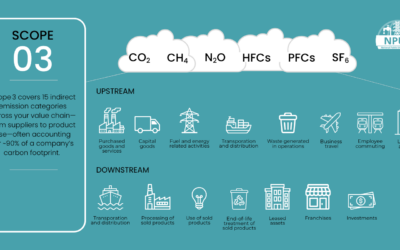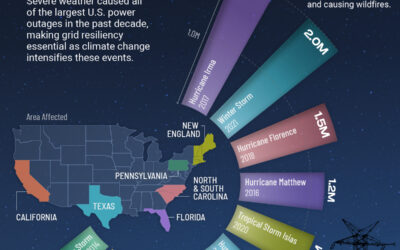Visualizing the State of Climate Change
The recent influx of wildfires, droughts, and hurricanes serves as a warning sign of the impact of climate change.
In order to identify ways to mitigate the crisis, it’s important to understand the historical drivers and current state of climate change.
This infographic sponsored by the National Public Utilities Council (NPUC) explores how human activities have influenced the climate crisis and how decarbonizing the power sector can help.
The Human Drivers of Climate Change
Global warming, the phenomenon driving climate change, is a result of increasing greenhouse gas (GHG) emissions.
GHGs in the atmosphere increase the Earth’s temperature through the greenhouse effect. This refers to the natural warming of the Earth that occurs when GHGs trap the sun’s heat.
Since the Industrial Revolution, human activities like energy generation and consumption from fossil fuels have accelerated GHG emissions and the greenhouse effect. The atmospheric concentration of carbon dioxide is now nearly 415 parts per million (ppm), up from around 280 ppm prior to the Industrial Revolution. As a result, the Earth is warming faster.
For a better understanding of how humans have contributed to the crisis, here’s a look at historical CO2 emissions by sector:

Electricity and heat by far accounts for the largest share of emissions since 1990. This is because of the dominance of fossil fuels in our energy mix over the last few decades.
The transport sector is the second-largest contributor largely due to the reliance on internal combustion engines, oil-fired ships, and other fossil fuel products like jet fuel.
Limiting the temperature rise and ultimately the impacts of climate change will require emissions reductions across all sectors, starting with electricity generation.
How Decarbonizing the Power Sector Can Help
A decarbonized energy system with clean electricity generation is an essential building block for the road to net-zero emissions.
There are two factors that emphasize the importance of a clean power sector. First, all sectors of the modern economy rely on electricity for daily functions. If this electricity comes from clean sources, it can help reduce the consumer’s carbon footprint. Second, global power demand is charging up with the electrification of sectors like transport and industry. As a result, supplying clean electricity will be more important than ever.
In Part 2 of the Road to Net Zero series, we will explore pathways to decarbonize the U.S. economy, beginning with the power sector.





